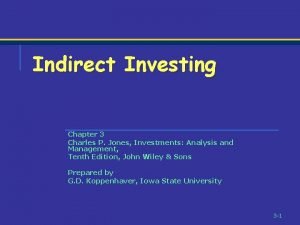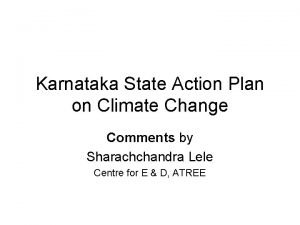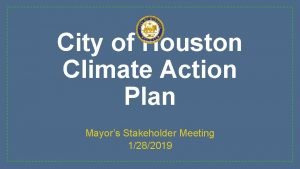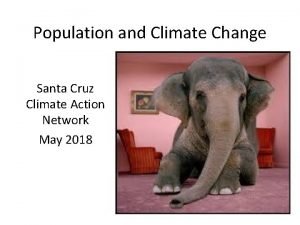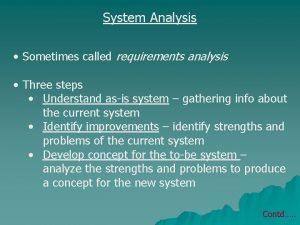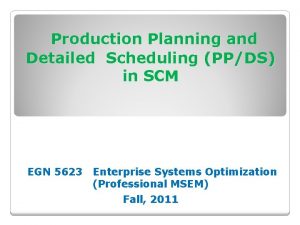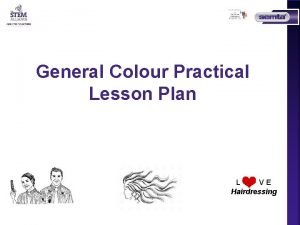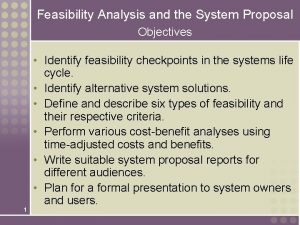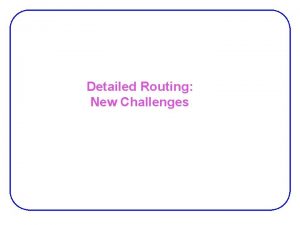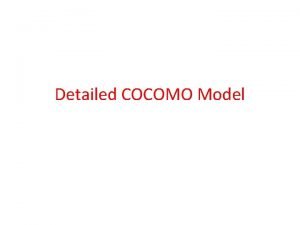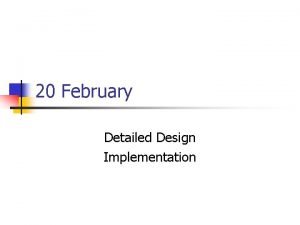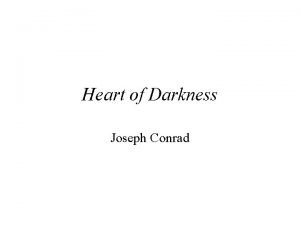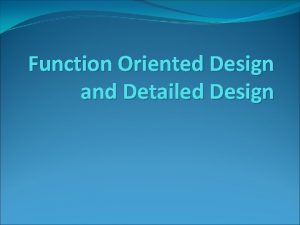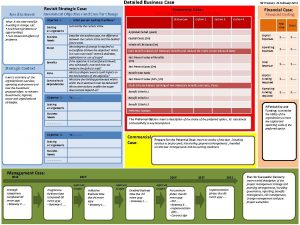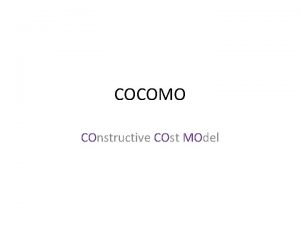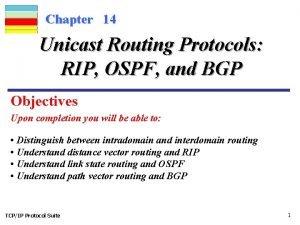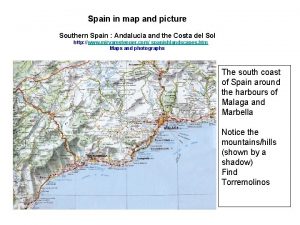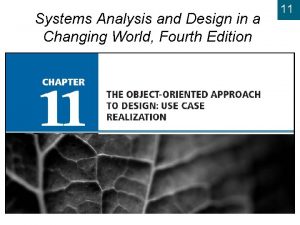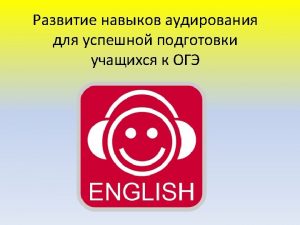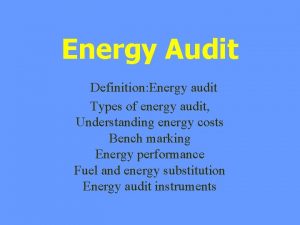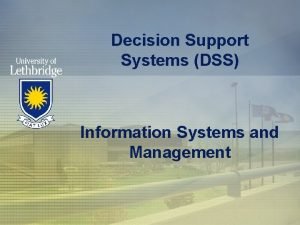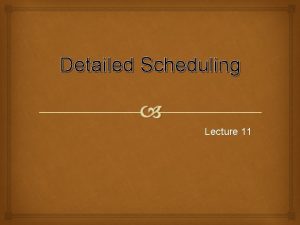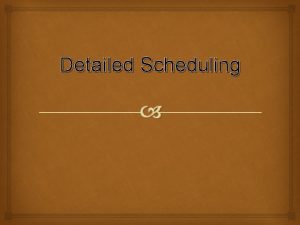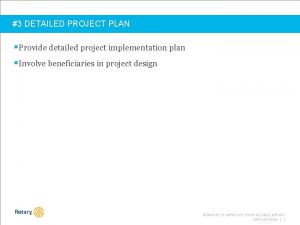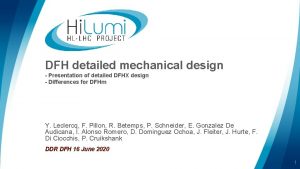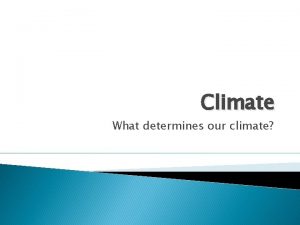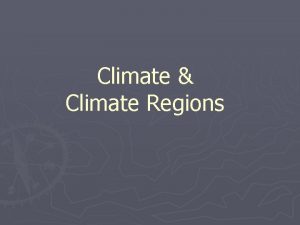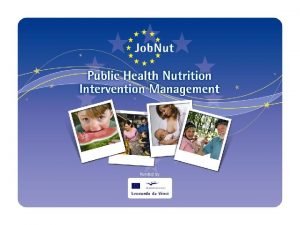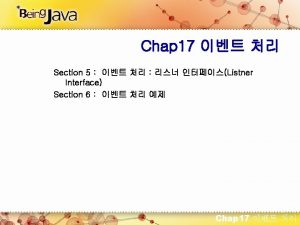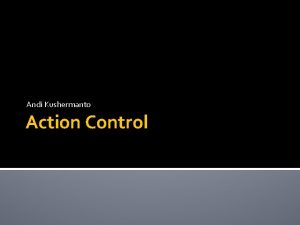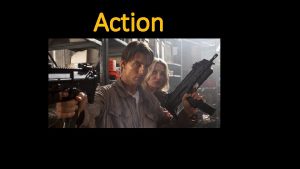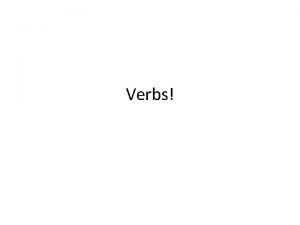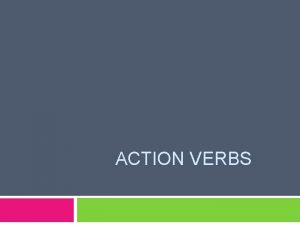Investing in Climate Action investing in LIFE Detailed

































- Slides: 33

Investing in Climate Action, investing in LIFE Detailed information on the 2014 call for proposals for action grants – guidance to applicants 12/06/2014 Greek workshop

Agenda § Guidance to applicants – Is LIFE for me? – Success rates – Timetable – Components of the 2014 LIFE call – Guidance and support – Application forms – LIFE CLIMA and IP award criteria – Key steps in preparing an application – What is eligible for co-funding – E-proposal tool – Key messages – Frequently asked questions – general guidance to applicants § Opportunity for Q&A

Is LIFE for me? § Be SURE that LIFE is the appropriate funding programme for your Environment and Climate Action project (NOT a structural fund, NOT an operational business financing tool, NOT a research tool) § READ the application guidelines § Be AWARE of all the exceptions that may apply to you § Ensure financial coherence; Watch COST EFFECTIVENESS § FOCUS - Do NOT include Actions not related to the objective of your proposal § CHECK whether your project fully fits with a priority project topic, or you will receive fewer points § The SELECTION procedure of LIFE is a very tough, through and detailed one.

Is LIFE for me? What awaits the beneficiaries I § Project management: minimum 1 full-time equivalent § Associated beneficiaries/Co-financers: As many as necessary to make it a success and as s/he can handle § Reporting: In English (annexes in language of the application (relevant translation costs incurred after project start are eligible) Every 18 months technical and financial progress reports, 1 progress report with 2 nd pre-financing payment request (after consumption 1 st pre-financing), 1 final report with payment request.

Is LIFE for me? What awaits the beneficiaries II Monitoring obligations § Monitoring of Project Outcomes: Follow-up on the targeted environmental/climate outcomes related to at least one of the relevant outcome indicators and to the replicability/transferability of the related actions (MAWP) § Monitoring of Project Progress: Ensure timeliness and full compliance of the project with the proposal

Is LIFE for me? What awaits the beneficiaries III § Support: An external Monitoring Team (Mo. T) for technical and financial FAQ related to reporting and project management; EASME/Commission for IPs under the sub-programme for environment for bigger issues (modification requests, payments), but always through Mo. T § Visits: Mo. T: likely to involve a visit after project start, then approximately once a year; EASME/Commission are likely to visit during the lifetime of the project. § Knowledge Sharing, Publicity, and Recognition

Submission trend 2007 -2012

Success rate consolidated

Timetable for 2014

Components of the 2014 LIFE call § Action grant projects: – LIFE Environment and Resource Efficiency (ENV) – LIFE Nature and Biodiversity (NAT) – LIFE Environmental Governance and Information (GIE) – LIFE Climate Change Mitigation (CCM) – LIFE Climate Change Adaptation (CCA) – LIFE Climate Governance and Information (GIC) § § § Preparatory Projects Integrated Projects (sub-programme for environment only) Technical Assistance Projects (sub-programme for environment only) Capacity Building Projects (NPO Operating Grants = separate call)

Guidance and support § Information sources include: – LIFE Regulation – Multiannual Work Programme – LIFE Web page, DG Climate Action web page – Application Packages – National Contact Points - when preparing the proposal, the applicants may wish to consult the relevant LIFE National Contact Point; the complete list of the names and contact addresses of the national authorities for LIFE in the Member States can be found on the LIFE website at http: //ec. europa. eu/environment/life/contact/nationalcontact /index. htm

Application forms and process The application form includes: § Guidelines for Applicants (and forms) § Evaluation Guidelines § Model Grant and Common Provisions § Comparative Document (is LIFE the right instrument? Which strand? ): – Vs. Horizon 2020 vs. structural funds – NAT (vs. BIO) vs. ENV vs. CCA vs. CCM // GIE vs. GIC?

Application forms and process – Environment or climate sub-programme Environment § Projects falling under one of the project topics Climate § Climate mitigation or adaptation is the main goal § Climate mitigation or § Clear link to the specific adaptation is a by-product but objectives for the three not the central objective climate action priority areas § Clear link to the specific objectives for the three environmental priority areas

Application forms and process – H 2020 or LIFE climate sub-programme H 2020 § LIFE CCM and CCA can support demonstration and pilot projects but also best practice projects LIFE Climate § Research and innovation actions where a strong element of research must be part of the project § For Governance and § Information priority areas under the CC subprogramme it is posible to support information, awareness and dissemination§ projects § Research activities must be strictly limited Innovative actions which are more focused on pilot projects, prototypes, demonstration and market replication SME instrument – three phase: feasibility/viability study; demonstration on a pilot level; commercialisation

Climate Action award criteria (2014 -2017) Overall pass score: 55 of 100 possible points

Integrated Project award criteria (2014 -2017) Overall pass score: 55 of 100 possible points

Key steps in preparing an application I § When preparing your proposal, the following main types of eligible actions must be clearly distinguished: – Preparatory actions (A Actions), – Land purchase/lease of land and/or compensation payment for land use rights (B Actions), – Concrete implementation actions (C Actions), – Monitoring of the impact of the project actions (D Actions), – Communication and dissemination actions (E Actions), – Project management and monitoring of project progress (F Actions). § To be taken eligible for funding, all actions must meet each of the following conditions: – the need of the action has to be well justified in view of the objectives of the project; – the long-term sustainability of the investments must be guaranteed. See application guidelines for more detail on these actions

Key steps in preparing an application II § READ the application guidelines § Be SURE that LIFE is the appropriate funding programme for your Environment and Climate Action project (NOT a structural fund, NOT an operational business financing tool, NOT a research tool) § Be AWARE of all the exceptions that may apply to you § Ensure financial coherence; Watch COST EFFECTIVENESS § FOCUS - Do NOT include Actions not related to the objective of your proposal § CHECK whether your project fully fits with a priority project topic, or you will receive fewer points The SELECTION procedure of LIFE is a very tough, thorough and detailed one.

Key steps in preparing an application III § Common reasons for failure: – No clear EU relevant environmental or climate action focus – Not convincingly demonstrative, pilot or best practice § Key points to remember: LIFE does not finance: – Compensatory action under Art. 6 of the Habitats directive – Actions that should be (or are) financed under Structural Funds or CAP – Research projects § Be clear and precise – applications are evaluated on what is submitted (not on the potential of the idea) § Read documents § Read about and talk to ongoing projects § Start preparing early and make use of all available resources http: //ec. europa. eu/environment/life/index. htm

Key steps in preparing an application III § Common reasons for failure: – No clear EU relevant environmental or climate action focus – Not convincingly demonstrative or pilot § Key points to remember: Life does not finance: – Compensatory action under Art. 6 of the Habitats directive – Actions that should be (or are) financed under Structural Funds or CAP – Research projects § Be clear and precise – applications are evaluated on what is submitted (not on the potential of the idea) § Read documents § Read about and talk to ongoing projects § Start preparing early and make use of all available resources http: //ec. europa. eu/environment/life/index. htm

What is eligible for co-funding § In general: All cost directly related to the project objectives § Personnel costs (if public authority: 102% rule) § External assistance (limited to 35% of the budget) § Equipment (special rules on depreciation) § Overheads (limited to 7%) § Consumables/Other costs § Land purchase (only for nature or climate change objectives, and with dedication to nature purposes)

E-proposal tool § Full online process – Preparation / Submission – Communication – Revision – Amendment § Structured data § Can allow third parties to see applications in development § https: //webgate. ec. europa. eu/eproposal. Web/ § The application tool contains all administrative (A), technical (B and C) and financial (F) forms required, and functionalities to attach relevant documents (maps, photos, diagrams, graphs, mandatory administrative and financial annexes). Guidelines to applicants will provide complete details regarding the use of the e. Proposal tool and the application forms. .

E-proposal tool

E-proposal tool

E-proposal tool

E-proposal tool

E-proposal tool

E-proposal tool

Key messages 1. There is significant competition for LIFE funds 2. You can't get a grant if you don't submit an application – on time. . . 3. It takes time and money to prepare an application 4. Proposals that fail are poorly prepared.

Frequently Asked Questions: General Guidance to Applicants § In which language may the proposal be submitted? The Contracting Authority recommends that applicants fill in the technical part in English, although proposals may be submitted in any of the official EU languages, except Irish/Maltese. The grant agreement, project management, formal reporting and all communication with the Contracting Authority have to be in English. The title of the proposal and form B 1 ("Summary description of the project") must always be submitted in English. Form B 1 may also be submitted in the language of the proposal. § Who may submit a proposal? A proposal may be submitted by any legal person registered in the European Union. Applicants may fall into three types of beneficiaries: (1) public bodies (public authorities), (2) private commercial organisations and (3) private non-commercial organisations (including NGOs). § Who may participate in a project? Once a proposal has been accepted for co-funding, the applicant will become the coordinating beneficiary who is legally and financially responsible for the implementation of the project. An associated beneficiary may be legally registered outside the European Union, provided that the coordinating beneficiary is based in the EU. Any activities to be carried outside the EU must be necessary to achieve EU climate objectives and to ensure the effectiveness of interventions carried out in the Member State territories to which the Treaties apply. There is no obligation to involve associated beneficiaries in a LIFE proposal. A project co-financer only contributes to the project with financial resources, has no technical responsibilities, and cannot benefit from the EU financial contribution.

Frequently Asked Questions: General Guidance to Applicants § What is the optimal budget for a LIFE project? There is no fixed minimum size for project budgets. While large ambitious projects (i. e. over EUR 5 million total costs) have been financed several times in the past, very small projects (i. e. below EUR 500, 000 total costs) have seldom succeeded due to the limited output and consequently the low added value. § What is the maximum rate of EU co-financing under LIFE? For the duration of the first LIFE multiannual work programme for 2014 -2017, the maximum EU co-financing rate for LIFE action grant projects is 60% of the total eligible project costs. § How much should project beneficiaries contribute to the project budget? The coordinating beneficiary and any associated beneficiaries are expected to provide a reasonable financial contribution to the project budget. § What is the optimal starting date and duration for a project? The earliest possible starting date for these projects is 16 July 2015. Any costs incurred before the project's starting date will not be considered eligible and cannot be included in the project budget. the project duration must correspond to what is necessary to complete all of the project's actions and to reach all its objectives. Most projects last for 2– 5 years. § Outsourcing of project activities The beneficiaries should have the technical and financial capacity and competency to carry out the proposed project activities. It is therefore expected that the share of the project budget allocated to external assistance should remain below 35%.

Frequently Asked Questions: General Guidance to Applicants § How long should a LIFE proposal be? A proposal should be as concise and clear as possible. Applicants should avoid voluminous proposals and should not provide excessively detailed descriptions. Clear and detailed descriptions should, however, be provided for all project actions. § Long term sustainability of the project and its actions It is obligatory that throughout the duration of the project, the beneficiaries consider how these investments will be secured, maintained, developed and made use of or replicated after the end of the project. This should be built into the proposal. § Replication and dissemination LIFE projects are expected to be widely replicated and results disseminated in order to ensure a strong European added value beyond the investment into the LIFE project itself. § Research activities Whereas EU funding for research activities is provided under Horizon 2020 – the Framework Programme for Research and Innovation (2014– 2020), limited research aimed to improve and enhance the knowledge data underpinning the project may be carried out within a LIFE project. § Complementarity with other EU funding programmes According to Article 8 of the LIFE Regulation, activities supported from the LIFE Programme must ensure consistency and synergies, and avoid overlap with other funding programmes of the Union. It is essential that beneficiaries check whether the actions proposed under their project in practice could be, or are, funded through other EU funds.

Opportunity for Q&A
 Indirect investing
Indirect investing Climate change 2014 mitigation of climate change
Climate change 2014 mitigation of climate change Karnataka state action plan on climate change
Karnataka state action plan on climate change Lara cottingham city of houston
Lara cottingham city of houston Tempe climate action plan
Tempe climate action plan Santa cruz climate action network
Santa cruz climate action network Use case description example
Use case description example Bpa bpi bpr
Bpa bpi bpr Detailed reading examples
Detailed reading examples Production planning and detailed scheduling
Production planning and detailed scheduling Detailed lesson plan in hairdressing
Detailed lesson plan in hairdressing Feasibility analysis matrix
Feasibility analysis matrix 2019 elizabeth bishop sample answer
2019 elizabeth bishop sample answer Antenna effect in vlsi
Antenna effect in vlsi Four phases used in detailed cocomo model are
Four phases used in detailed cocomo model are Ok drawing
Ok drawing Detailed lesson plan about quadratic equation
Detailed lesson plan about quadratic equation Detailed design in software engineering
Detailed design in software engineering Example of mechanical drawing
Example of mechanical drawing Short summary of heart of darkness by joseph conrad
Short summary of heart of darkness by joseph conrad Detailed design software
Detailed design software Detailed business case
Detailed business case Intermediate cocomo model example
Intermediate cocomo model example Write a detailed note on unicast routing protocols
Write a detailed note on unicast routing protocols Detail drawing example
Detail drawing example Typical drawing scales
Typical drawing scales Map of southern spain
Map of southern spain Solid in engineering drawing
Solid in engineering drawing How to write a riddle
How to write a riddle First cut design class diagram
First cut design class diagram Detailed comprehension
Detailed comprehension Need of energy audit ppt
Need of energy audit ppt Local area decision network
Local area decision network Cima detailed record of experience example
Cima detailed record of experience example
